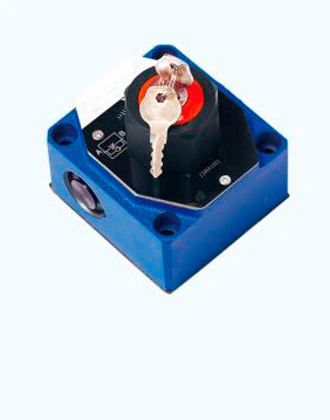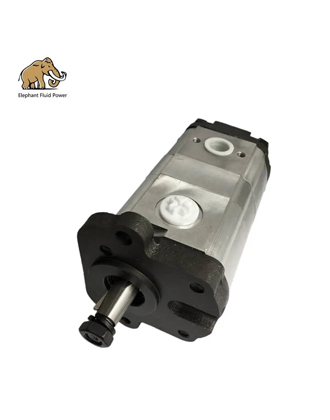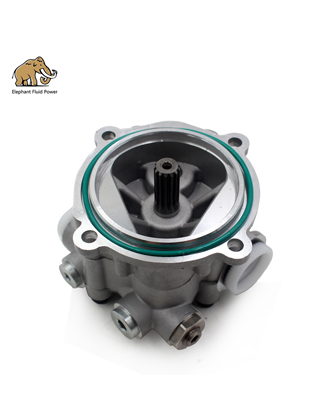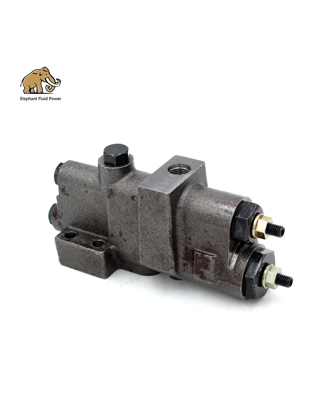Selecting the appropriate hydraulic piston pump for a specific application is a crucial decision that can significantly impact the performance and efficiency of hydraulic systems. With various types and configurations available, it's essential to understand the factors that influence the choice of a hydro piston. In this blog, we'll explore the key considerations to keep in mind when selecting a hydraulic piston pump that aligns with your needs.
Types of Hydraulic Piston Pumps Revisited
Before diving into the selection process, let's revisit the two primary types of hydraulic piston pumps: axial piston pumps and radial piston pumps. Axial piston pumps, with their swashplate and bent-axis designs, are known for their compact size, efficiency, and precise control. Swashplate pumps are suitable for applications requiring variable flow rates, while bent-axis pumps are favored when space is limited. Radial piston pumps excel in applications demanding high pressures and heavy-duty performance. Their robust design makes them a reliable choice for industrial and construction applications.
Key Considerations for Selection
The hydro piston's ability to deliver the required pressure and flow rate is paramount. Consider the demands of your application and select a pump that can provide the necessary fluid power without operating beyond its limits. Efficiency directly impacts the overall performance of the hydraulic system. Look for pumps with high volumetric and mechanical efficiency to ensure optimal energy utilization and reduced operational costs. The operating environment, including factors like temperature, humidity, and exposure to contaminants, affects the pump's longevity. Choose a pump with seals and materials suitable for the specific conditions in which it will operate. Different applications demand varying levels of control over fluid flow and pressure. Some hydraulic piston pumps offer adjustable swashplate angles or variable displacement options, allowing for fine-tuning of system behavior. Available space and mounting requirements play a role in the pump selection process. Axial piston pumps are generally more compact, while radial piston pumps might require more installation space.
Making the Right Choice
Consider the ease of maintenance and availability of replacement parts when selecting a pump. Pumps that are designed for easy maintenance can reduce downtime and associated costs.In applications where noise and vibrations are a concern, look for pumps designed with features to minimize these effects, such as integrated damping mechanisms. To select the most suitable hydraulic piston pump, it's essential to collaborate with experienced engineers and professionals who understand the intricacies of fluid power systems. Assess your application's requirements comprehensively and consider both short-term performance and long-term reliability.
Conclusion
Choosing the right hydro piston involves a meticulous evaluation of technical specifications, operating conditions, and performance expectations. The decision-making process requires a balance between the pump's capabilities and the demands of the application. By taking into account factors such as pressure, flow rate, efficiency, and environmental conditions, you can ensure that the selected hydraulic piston pump contributes to the optimal functioning of your hydraulic system.
 French
French
 Portuguese
Portuguese
 Russian
Russian
 German
German
 Spanish
Spanish
 Japanese
Japanese
 Korean
Korean
 Irish
Irish
 Greek
Greek
 Turkish
Turkish
 Italian
Italian
 Danish
Danish
 Romanian
Romanian
 Indonesian
Indonesian
 Czech
Czech
 Afrikaans
Afrikaans
 Swedish
Swedish
 Polish
Polish
 Basque
Basque
 Catalan
Catalan
 Esperanto
Esperanto
 Hindi
Hindi
 Lao
Lao
 Albanian
Albanian
 Amharic
Amharic
 Armenian
Armenian
 Azerbaijani
Azerbaijani
 Belarusian
Belarusian
 Bengali
Bengali
 Bosnian
Bosnian
 Bulgarian
Bulgarian
 Cebuano
Cebuano
 Chichewa
Chichewa
 Corsican
Corsican
 Croatian
Croatian
 Dutch
Dutch
 Estonian
Estonian
 Filipino
Filipino
 Finnish
Finnish
 Frisian
Frisian
 Galician
Galician
 Georgian
Georgian
 Gujarati
Gujarati
 Haitian
Haitian
 Hausa
Hausa
 Hawaiian
Hawaiian
 Hebrew
Hebrew
 Hmong
Hmong
 Hungarian
Hungarian
 Icelandic
Icelandic
 Igbo
Igbo
 Javanese
Javanese
 Kannada
Kannada
 Kazakh
Kazakh
 Khmer
Khmer
 Kurdish
Kurdish
 Kyrgyz
Kyrgyz
 Latin
Latin
 Latvian
Latvian
 Lithuanian
Lithuanian
 Luxembourg
Luxembourg
 Macedoniar
Macedoniar
 Malagasy
Malagasy
 Malay
Malay
 Malayalam
Malayalam
 Maltese
Maltese
 Maori
Maori
 Marathi
Marathi
 Mongolian
Mongolian
 Burmese
Burmese
 Nepali
Nepali
 Norwegian
Norwegian
 Pashto
Pashto
 Persian
Persian
 Punjabi
Punjabi
 Serbian
Serbian
 Sesotho
Sesotho
 Sinhala
Sinhala
 Slovak
Slovak
 Slovenian
Slovenian
 Somali
Somali
 Samoan
Samoan
 Scots Gaelic
Scots Gaelic
 Shona
Shona
 Sindhi
Sindhi
 Sundanese
Sundanese
 Swahili
Swahili
 Tajik
Tajik
 Tamil
Tamil
 Telugu
Telugu
 Thai
Thai
 Ukrainian
Ukrainian
 Urdu
Urdu
 Uzbek
Uzbek
 Vietnamese
Vietnamese
 Welsh
Welsh
 Xhosa
Xhosa
 Yiddish
Yiddish
 Yoruba
Yoruba
 Zulu
Zulu







